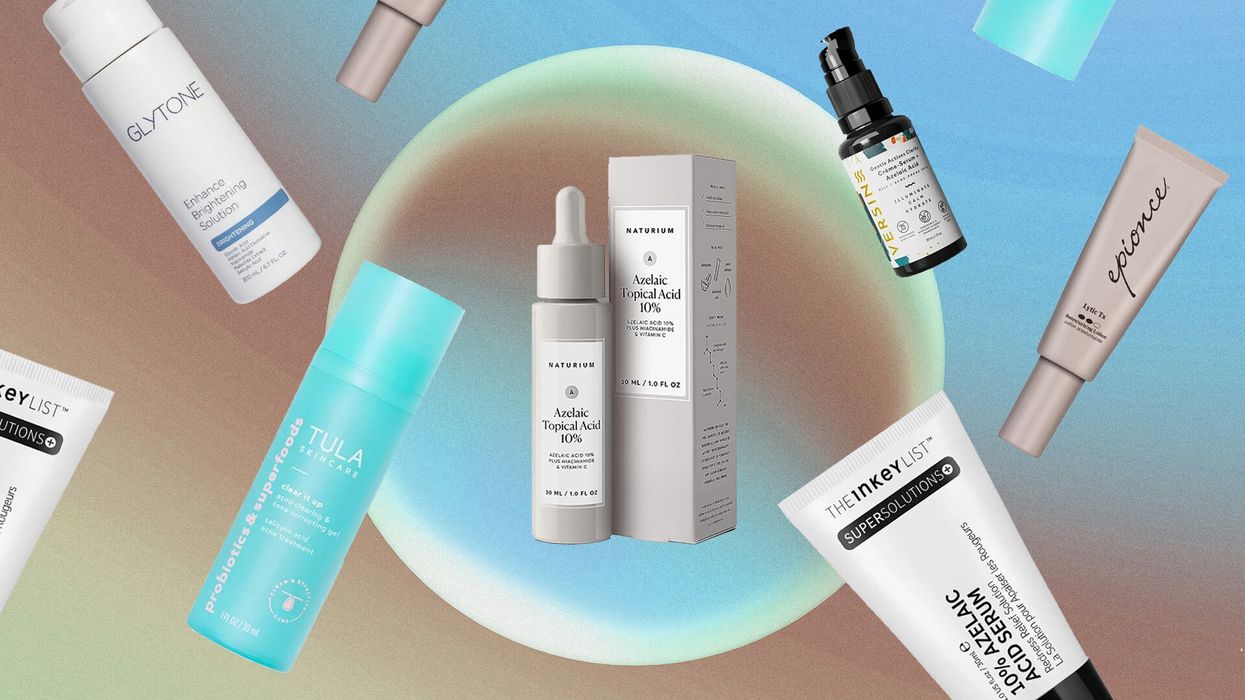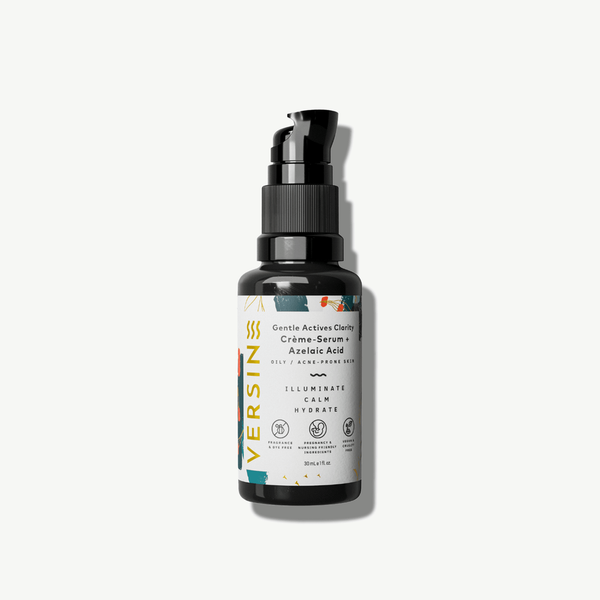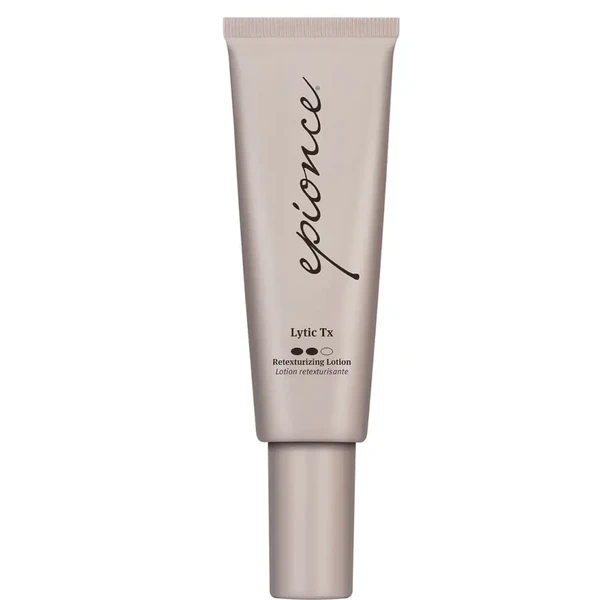
I had very little to no skincare literacy until The Ordinary posted up on West Broadway back in 2018. Suddenly, pure acids with unpronounceable names sold in dropper bottles became a part of my daily vocabulary. I was, at one point, on a glycolic acid waitlist. Since at least then, acids have reliably found their way into many of my products, including azelaic acid. Likely, the ingredient has found its way into your routines via foams, creams, gels, and serums. Its superpowers are manifold: it treats acne, evens skin tone and hyperpigmentation, and soothes redness. It also more or less cured my periorificial dermatitis (IYKYK). Luckily, the market is well aware of azelaic acid’s benefits, and it’s full of options. But that can also be lowkey overwhelming. To help clear up any confusion, we spoke with board-certified dermatologists to walk us through everything we need to know about azelaic acid.
What is azelaic acid?
Azelaic acid is a chemical inhibitor the growth of an enzyme called tyrosinase, which causes dark spots and hyperpigmentation. Azelaic acid exists in many different forms, but we’ve been assured none is necessarily better than the other. The potency of azelaic acid should always be listed on a product, and if you’re new to using azelaic, just like anything else, start with a weaker potency and work your way up!
What are the benefits of azelaic acid for skin?
Because it has antioxidant, anti-inflammatory, and antibacterial properties, azelaic acid is known as a great acne treatment. Plus it's ideal for treating rosacea and melasma, as well as for fading dark spots. It also offers “mild exfoliation benefits to help improve skin texture and complexion,” says Dr. Tiffany Libby, a board-certified dermatologist at Brown Dermatology in Rhode Island. It’s safe to use on all skin types, including sensitive skin, even during pregnancy, when skincare options are particularly limited.
Who should use azelaic acid?
Anyone can use azelaic acid, but it’s particularly beneficial for those whose concerns are acne, rosacea, or hyperpigmentation-related. Dr. Hadley King, a dermatologist at her own practice in New York, told us it’s also a great alternative for “those who are unable to tolerate other exfoliating acids or other treatment options.”
Are there any side effects to using azelaic acid?
Azelaic acid is probably the best exfoliation option for sensitive skin when it comes to sloughing off dead skin cells, but even if it’s unlikely, it is possible that you might experience some irritation—”possible redness, itching or stinging or dryness/peeling or tingling,” says Dr. Libby. “As with any ingredient that you may be adding to your routine for the first time, it’s best to apply to non-facial skin and test the product out first,” especially if you fall under the sensitive skin category.
Can you use azelaic acid every day?
Yes! It is safe to use azelaic acid up to twice a day. Results vary for azelaic acid, but you can expect to wait anywhere from four to six weeks to notice any significant changes.
What ingredients work well with azelaic acid? Are there any ingredients you should avoid while using azelaic acid?
Azelaic pairs well with most other skincare ingredients, but especially with anti-inflammatory niacinamide, which can offer additional help in alleviating redness. Dr. King advises against using it in tandem with hydroxy acids (AHAs)—like glycolic acid or lactic acid—and recommends that you use skin barrier supporting ingredients in your routine as well, things with ceramides and squalane.
Best Azelaic Acid Skincare Products
Gentle Actives Clarity Crème-Serum + Azelaic Acid

Azelaic acid is just one of the beneficial ingredients in this power serum, formulated specifically “for those experiencing hormonal acne and dark spots during and after pregnancy.” You’ll find in this formula: niacinamide, squalane, and calming tamanu oil to remedy issues of redness, irritation, and hydration all at once.
Enhance Brightening Solution

“[This is] one of my favorites that I keep readily available on my bathroom counter for my skincare routine. Apply it to a cotton round then to skin once daily or several times a week as tolerated to gently exfoliate, brighten skin's tone, and soften skin’s texture.” — Dr. Libby
Azelaic Topical Acid 10% with Niacinamide & Vitamin C

With over 3,500 ratings on Amazon averaging at 4.4 stars, this serum has quite the following. The before and after photos speak for themselves, but we can likely accredit its success to its well-balanced ingredient list, especially the use of coffee seed extract which works with vitamin c to brighten your skin tone.
Clear It Up Acne Clearing and Tone Correcting Gel

“[This azelaic acid gel] contains two percent salicylic acid to prevent breakouts, as well as azelaic acid to help brighten the skin, and niacinamide to help with tone and texture. It also hydrates with hyaluronic acid, and contains probiotics as well.” — Dr. King
10% Azelaic Acid Booster

Most Paula’s Choice products have at least a 4.5-star rating on Sephora, and a strong TikTok following—this topical azelaic acid product is no different. A sturdy acid concentration married with salicylic acid works to tackle uneven skin tone and redness as well as acne and blemishes.
Lytic Tx

“This is a great option for cleaning pores, improving skin texture, and reducing irritation associated with acne and redness. Its key ingredients include salicylic acid and azelaic acid for their acne-fighting and anti-inflammatory properties, zinc pyrithione, which has soothing, anti-inflammatory and anti-microbial properties, and hyaluronic acid, olive oil, avocado oil, and shea butter to hydrate and moisturize dry skin.” — Dr. King
SuperSolutions 10% Azelaic Serum Redness Relief Solution

This serum has a longer title than it has a list of ingredients, but it hacks the same issues of discoloration with that trusty 10 percent formula, and includes allantoin to relieve redness. For big fans of a gel over serum or lotion, this one’s for you.
Want more stories like this?
PSA: Your Skin Needs Ceramides
Yes, Dissolvable Makeup Wipes Are a Thing
Here’s How to Take a Passport Photo You Won’t Hate




